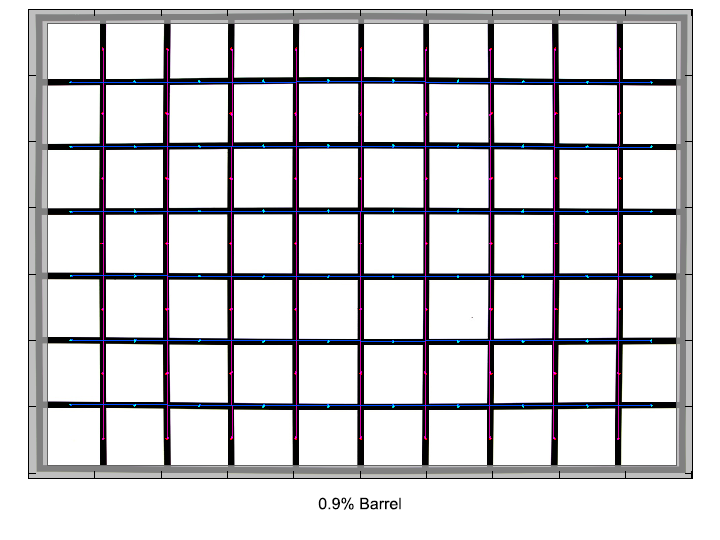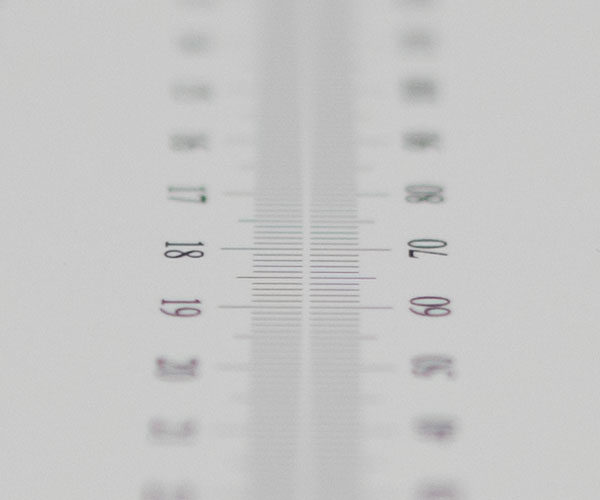|
Sigma AF 24mm f/1.4 DG HSM | A ("Art") (Nikon FX) - Review / Test Report - Analysis |
|
Lens Reviews -
Nikon / Nikkor (full format)
|
|
Page 2 of 3

Distortion
The lens produces a small amount of barrel distortion (0.9%), which is better than most in this class.

Vignetting
Very fast and wide lenses tend to suffer from pronounced vignetting at large apertures and the Sigma has its share of problems here. Wide open, there is a very hefty amount of light falloff (>2.4EV). As usual, stopping down reduces the amount of vignetting considerably. At f/2.8, the vignetting is already down to very moderate levels and from f/4 onward it should no longer be an issue for most scenes.
We're performing our vignetting analysis based on
(uncorrected) JPEGs straight from the camera. The JPG engine of the Nikon D3x features a rather flat
gradation curve, thus has a moderate contrast characteristic, resulting in comparatively low vignetting figures - the
corresponding Canon figures are roughly 40% higher due to the more
aggressive default contrast setting.

MTF (resolution)
The Sigma delivers excellent resoultion in the image center straight from the maximum aperture.
The borders and extreme corners struggle at large aperture settings, but stopped down to f/2.8 and beyond deliver good resolution, too.
Please note that the MTF results are not directly comparable across the different systems!
Below is a simplified summary of the formal findings. The chart shows line widths
per picture height (LW/PH) which can be taken as a measure for sharpness.
If you want to know more about the MTF50 figures you may check out the corresponding
Imatest Explanations

Chromatic Aberrations (CAs)
Chromatic aberrations (color shadows at harsh contrast transitions) are well controlled, on average showing readings of below 1px at the image borders.

Bokeh
One of the primary usage scenarios for a large aperture lens is to separate the main subject from the background. In such an image the quality of the bokeh (out-of-focus blur) is of major significance.
Wide-angle lenses, especially those with many aspherical elements, are not the best performers in this category but the Sigma is way above average here (in this class). In our test scene below the Sigma shows a bit of nervousness in the focus transition zones but we've seen much worse here really. However, it should be mentioned that there is some smearing at the image borders/corners.
 A surprising finding is that out-of-focus highlights are rendered quite beautifully with a comparatively smooth inner zone and only slight outlining of the highlight discs. As usual you will have to live with a deterioration of the disc shape towards the image borders at large apertures - this is a vignetting effect and pretty much unavoidable on full format cameras.
A surprising finding is that out-of-focus highlights are rendered quite beautifully with a comparatively smooth inner zone and only slight outlining of the highlight discs. As usual you will have to live with a deterioration of the disc shape towards the image borders at large apertures - this is a vignetting effect and pretty much unavoidable on full format cameras.

Bokeh Fringing
Bokeh fringing (non-coinciding focal planes of the various colors) is a common issue with relatively fast glass. As you can notice below the halos have different colors - magenta (red + blue) in front of the focus point and green beyond. Unlike lateral lateral CAs, bokeh fringing can not easily be fixed in post processing.
Typical for most ultra fast primes the Sigma shows a certain amount of bokeh fringing at large aperture settings but the result is above average here again. The fringing can be reduced by stopping down and it's mostly gone from f/2.8 onward.
In addition, these shots also illustrate that there is virtually no focus shift when stopping down.
|
Move the mouse cursor over the f-stop marks below to observe the respective LoCAs
|
| f/1.4 |
f/2 |
f/2.8 |
f/4 |
|

|
|